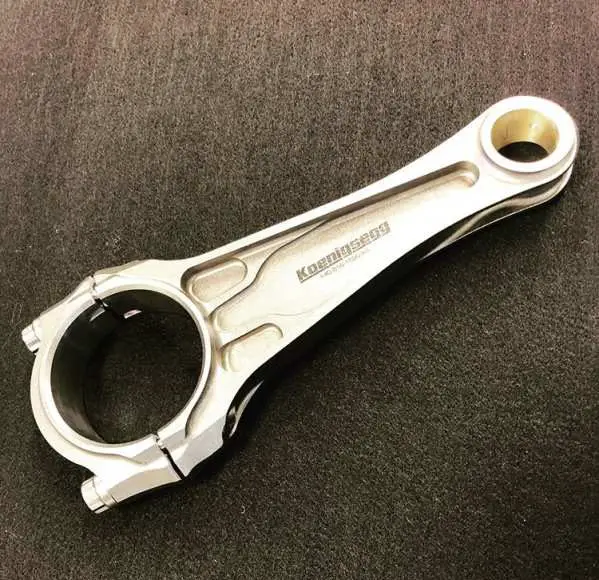When you’re a boutique exotic car maker that only makes a dozen or so cars every month, you’re going to have time to engineer in some amazing details.
When it comes to cars that fetch more than a million dollars, cars that have that extra 20 percent of performance you just can’t get from a larger exotic maker like Ferrari, and is Swedish where you expect quirky little things like this, it’s no wonder people love Koenigsegg’s so much. Koenigsegg Automotive shared a close-up look of one of its thousands of connecting rods it makes a year earlier today (Oct. 22,2018) and it is one of the most intricate and detailed designs anyone has put into something that no one ever sees. Check out a glimpse of the connecting rod below.
If you didn’t already know Koenigsegg makes some of its engines in-house. With such innovative designs made for its engines and transmissions, literally no other engine maker has the expertise to craft individualized parts like this. And, when you only sell so many cars in a month, presumably, you’re going to have some down-time to engineer in some details like this.
As their post shows the design itself is worth looking into. At first glance, it isn’t an exactly fragile looking connecting rod as you’d expect in an engine that rotates at over 8500 RPM consistently, it’s a very robust design just by looking at it with the naked eye. With steel, the material of choice over titanium, Koenigsegg says that this connecting rod is just as strong as any titanium rod on the market weighing just the same.
Keen eyes will notice that this isn’t any ordinary steel connecting rod. If you head over to the Googles and take a look at some bog standard rods, you’ll see that, while some have an indentation to save a couple of grams, their design is not as clever as Koenigsegg’s.
Finally, there’s that Haiku laser etched into the other side. Many in the comments of that Instagram post above are critical of the lack of three lines but poetry is poetry and it’s Koenigsegg we’re talking about. Perhaps it was translated from Japanese, which is the theory I’m going with. Japanese Haiku’s were written in one long line anyways before we Westernized it into three lines.
It’s small touches like this that endear this Swedish automaker with the rest of the world. Sure they can break world speed records but they also have a side that appreciates throwing in a bit of art with their parts.




